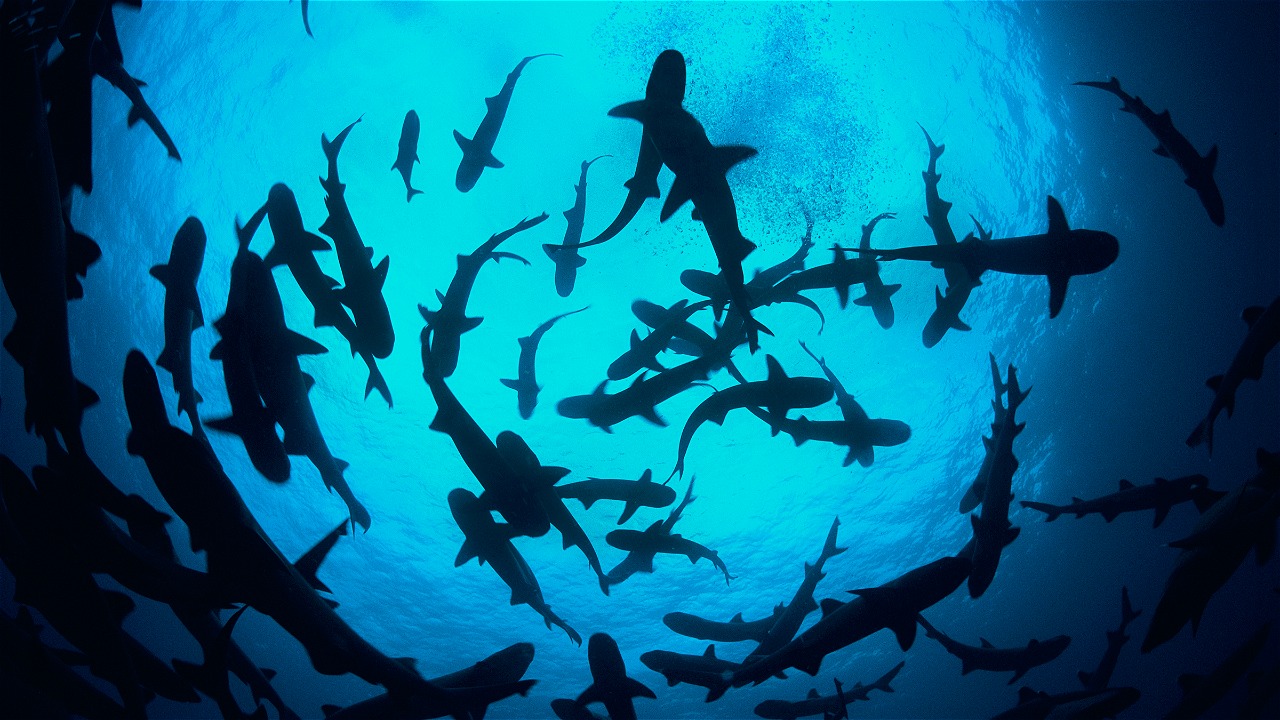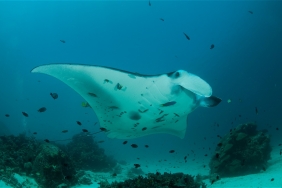SAVING SHARKS AND MANTA RAYS IN WEST MANGGARAI
By Coral Triangle Team
Sharks and manta rays are valuable natural resources owned by Indonesia, especially in the area of West Manggarai Regency, East Nusa Tenggara. These two species are a magnet that can attract tourists from all over the world to come to Labuan Bajo and Komodo Island, to dive and see firsthand the beauty of sharks and manta rays in their habitat.
Threats to shark and manta ray populations in tourism areas are not impossible to find. From the fisheries aspect, the capture of sharks and manta rays as targets and their utilization when caught accidentally, also threatens their population in this region, which currently numbers no more than 1000 individuals. It is feared that this will adversely affect the ecosystem and the economy from the tourism sector.
Referring to the formation of the Regent Instruction in 2013 regarding the protection of protected animal species such as sharks and manta rays, encourages the Regional Government through the Marine and Fisheries Service of West Manggarai Regency to continue to strive for more comprehensive management by drafting Regional Regulations (Perda) on sharks and manta rays.
WWF-Indonesia on August 14-15, 2014, together with Kupang State Polytechnic, at the Office of Marine and Fisheries Department of West Manggarai Regency, initiated the initial meeting to develop this draft regulation. The purpose of this meeting was to collect information on shark and manta ray fisheries owned by a number of stakeholders, non-governmental organizations, academics, fishermen representatives, dive operators and other related parties in the preparation of the Academic Paper on Shark and Manta Ray Protection. Yohanes Valbis, from the Bappeda of West Manggarai Regency, emphasized the importance of this regulation to maintain a sustainable marine ecosystem, as well as to maintain tourism attraction in the region. This statement is supported by data from the Coral Alliance and Reef Check which states that West Manggarai, especially Labuan Bajo and Komodo Island, are the main destinations for tourist divers. "Most foreign tourists come to West Manggarai to dive. 70 percent of them come because they want to see manta rays," said Naneng Setiasih from the Coral Alliance.
According to Manta Watch data, the average number of manta rays encountered on each dive is higher than a number of popular dive sites, such as Derawan in East Kalimantan, Nusa Penida in Bali, Raja Ampat in Papua, and even world-class underwater parks such as the Maldives, the Andaman Islands, and the Great Barrier Reef in Australia. "Manta rays also contribute US$15 million in tourism revenue annually to the Indonesian economy," said Andrew Harvey of Manta Watch.As for the economy in West Manggarai Regency, the manta ray diving tourism sector brings in US$4500 - 225,000 per year, which comes in through dive operators.
At the end of the discussion, a number of parties present reached a mutual agreement in refining the preparation of an academic paper, as a basis to support the drafting of the local regulation.In the future, it is hoped that other regions that are included in the migration area of manta rays, such as the provinces of West Nusa Tenggara and Bali, can also issue similar local regulations as a form of protection for sharks and manta rays.





